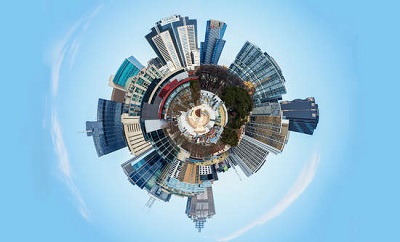 Friday, July 26, 2024
Friday, July 26, 2024  Friday, July 26, 2024
Friday, July 26, 2024 
As blogged on Fast Company, more than half of the world’s population currently lives in cities while projections show an increase to two thirds by 2050. Many people living in small areas means large amounts of waste, high resource consumption and loads of energy use. We can combat these issues with the ideas behind the circular economy.
If we were to envision our cities as circular cities, how would they look? Green. And why? Because achieving a circular economy means using nature as a template. With the help of green infrastructure, we can take nature as the example and transform our cities into circular cities.
Green infrastructure is a planned network of natural and semi-natural areas in urban areas strategically designed to solve problems with storm water management, heat stress, air quality and biodiversity, to name just a few examples. Urban trees, green roofs and facades and constructed wetlands are some common examples.
Achieving a circular city means ensuring the mitigation of waste. Green infrastructure reduces waste in the construction industry by increasing the longevity of exterior surfaces. With greening, roofs survive longer against harmful weathering and intense sunlight. The lifespan of conventional flat roofs can even be doubled with greening. As one city with a long tradition of greening roofs, Berlin even has green roofs reaching approximately 100 years in age.
Green facades also play a similar role by reducing the maintenance requirements of conventional facades due to the protective layer against sunlight and high temperatures. By using these nature-inspired measures in green infrastructure, cities reduce waste in the construction industry and become more circular. Making our buildings last longer means less waste and helps us approach the idea of circular cities.
Keep reading this blog on Fast Company
Watch the video and learn more about Construction Links Network – the peer-to-peer network sharing platform for the construction, building and design community.
Ideal for YOUR Press Releases | Project Updates | New Appointments | Awards & Milestones | Company News | New Products/Services | Brochures | Videos | Infographics | Blog Sharing | Events and More